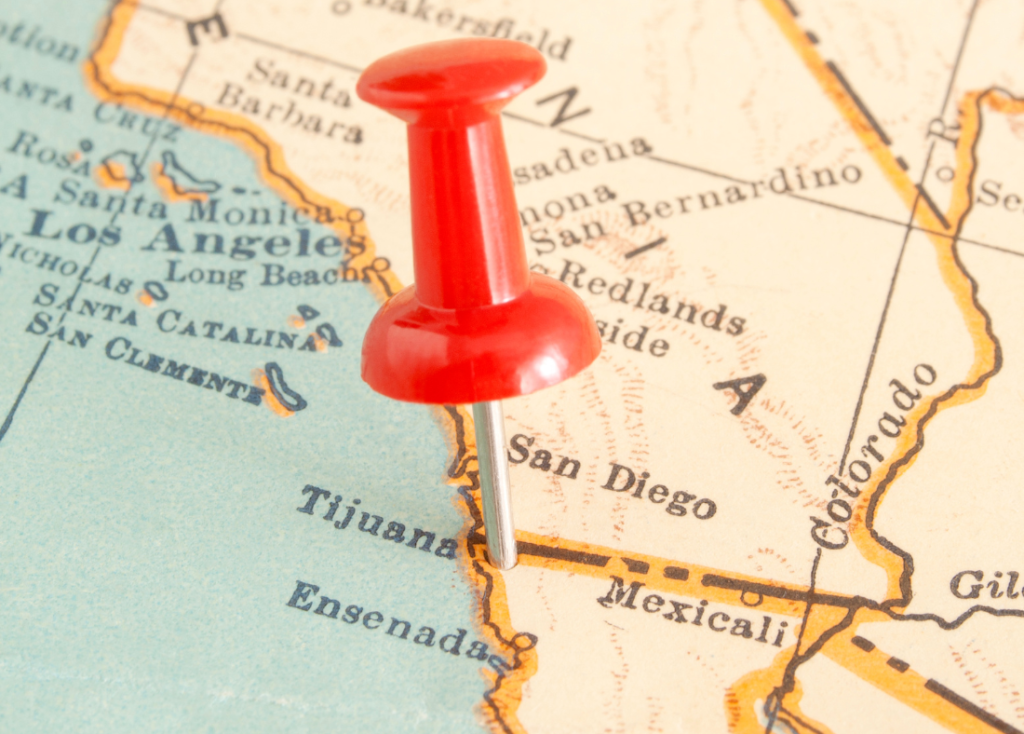By Huxley Sidari (he/him/his), Youth volunteer with Youth v. Oil

The ongoing sewage crisis in the Tijuana River is no new issue to San Diegans and residents of Tijuana alike. The river has been dumping untreated sewage directly into the Pacific Ocean for decades, resulting in the closure of beaches in cities like Imperial Beach and Coronado, damaged ecosystems, and a threat to public health. The history of the decades-long river sewage crisis dates back to the mid-20th century, when Tijuana’s population experienced rapid growth, outpacing its sewage infrastructure. Two separate treatment plants on the border were established in the late 1990s to address an alarming situation in which untreated sewage was being redirected directly into the Pacific Ocean; however, these same plants experienced frequent breakdowns and required maintenance. In 2017, a Mexican sewage pipe broke, and neither was it reported nor was it quickly repaired. The previous mayor of Imperial Beach called the Mexican spill “a tsunami of sewage,” serving as a tipping point and a signal for fewer band-aids and more structured and consistent solutions.
There has recently been a glimpse of hope for potential solutions when the USA’s executive Environmental Protection Agency (led by Lee Zeldin) and Mexico’s Secretary of the Environment and National Resources (led by Alicia Bárcena Ibarra) met to sign a Memorandum of Understanding (MOU) between both nations to begin addressing the current river sewage crisis. It is a step forward for both Lee Zeldin and the EPA under the current Trump administration, which has actively worked to repeal the 2009 Endangerment Finding that declared greenhouse gas emissions a danger to public health and is regulated under the Clean Air Act. You can read more here on the many other shortcomings of the EPA under the new Trump administration.
US officials and Zeldin himself framed this measure as a “massive environmental and national security win for Americans in the San Diego area,” and a significant part of this is due to the efforts of advocates to address the issue in the San Diego-Tijuana area. Politicians and civilians alike have been ramping up advocacy efforts to bring attention to the crisis, as beaches faced more closures earlier this year and the Pacific Ocean continues to suffer a steady influx of sewage into its waters.
To better understand the urgency of the situation, there have been recent increasing signs of toxic gases emanating from the most contaminated parts of the river, with newly elected San Diego County Board of Supervisors District 1 representative Paloma Aguirre commenting on the issue, saying, “[We] want to make sure that our recreationists, our visitors, our ranchers, our farmers, who come or live or work in the river valley are well aware of the potential for exposure to the hydrogen sulfide gases.” The same gas present in the river is an extremely flammable and highly toxic substance, and its effects range from mild headaches or eye irritation to unconsciousness and death. The emergence of increasingly harmful substances in the river underscores the severity of the issue, highlighting the crucial role the EPA plays in its subsequent actions to mitigate the serious public health risks posed by the crisis.
Some of our youth involved in SanDiego350 and Youth v. Oil’s efforts live in areas where the river crisis poses a larger risk, and they have shared their comments on this issue. Volunteer Cinthya comments:
“Living near the Tijuana River, we witnessed both sides of the story and felt the weight of both problems. The overwhelming stench and the visible pollution were things we were completely unprepared for, especially in what should have been a vibrant, beachside community. Over time, health issues began to surface. Concerned by the persistent odor and the rising number of sick students, some teachers began conducting their own research and tests. When the results came in, they revealed traces of toxic chemicals in the air, all of which traced back to pollution in the river. As a student advocate, I couldn’t help but worry about the long-term health risks this posed, not just to me and my classmates but to the entire community. No child should have to choose between getting an education and breathing clean air. The safety and well-being of students should never be compromised by environmental neglect.”
Despite the EPA’s attempts to repeal and cut funding for critical research, undermine sectors that promote DEI values, and significantly reduce their commitment to sustainability, the Memorandum of Understanding represents a giant leap forward. It addresses a series of ineffective solutions and establishes enforceable, concrete timelines for multiple expansions and the construction of infrastructure.
Unfortunately, the crisis is far from being resolved, and the timelines and promises outlined in the MOU are only as strong as the political will behind them. Activists and civilians must continue to hold both Mexican and US agencies accountable for the deadlines they’ve set and to ensure they are following through on the proposed infrastructure projects. This burden will primarily fall on residents of the San Diego-Tijuana area, who bear the brunt of sewage pollution daily. To stay informed about advocacy and the movement for solutions to the crisis, we recommend checking out Clean Border Water Now, an initiative under San Diego’s Surfrider Foundation focused on raising awareness and forming a movement to bring about change.
Finally, we must understand that the MOU is not a solution in itself, but a promise to bring about long-awaited changes that mitigate the issue and represent the most definitive show of progress in decades, demonstrating that cooperation between national parties is possible when communities organize and demand action.
